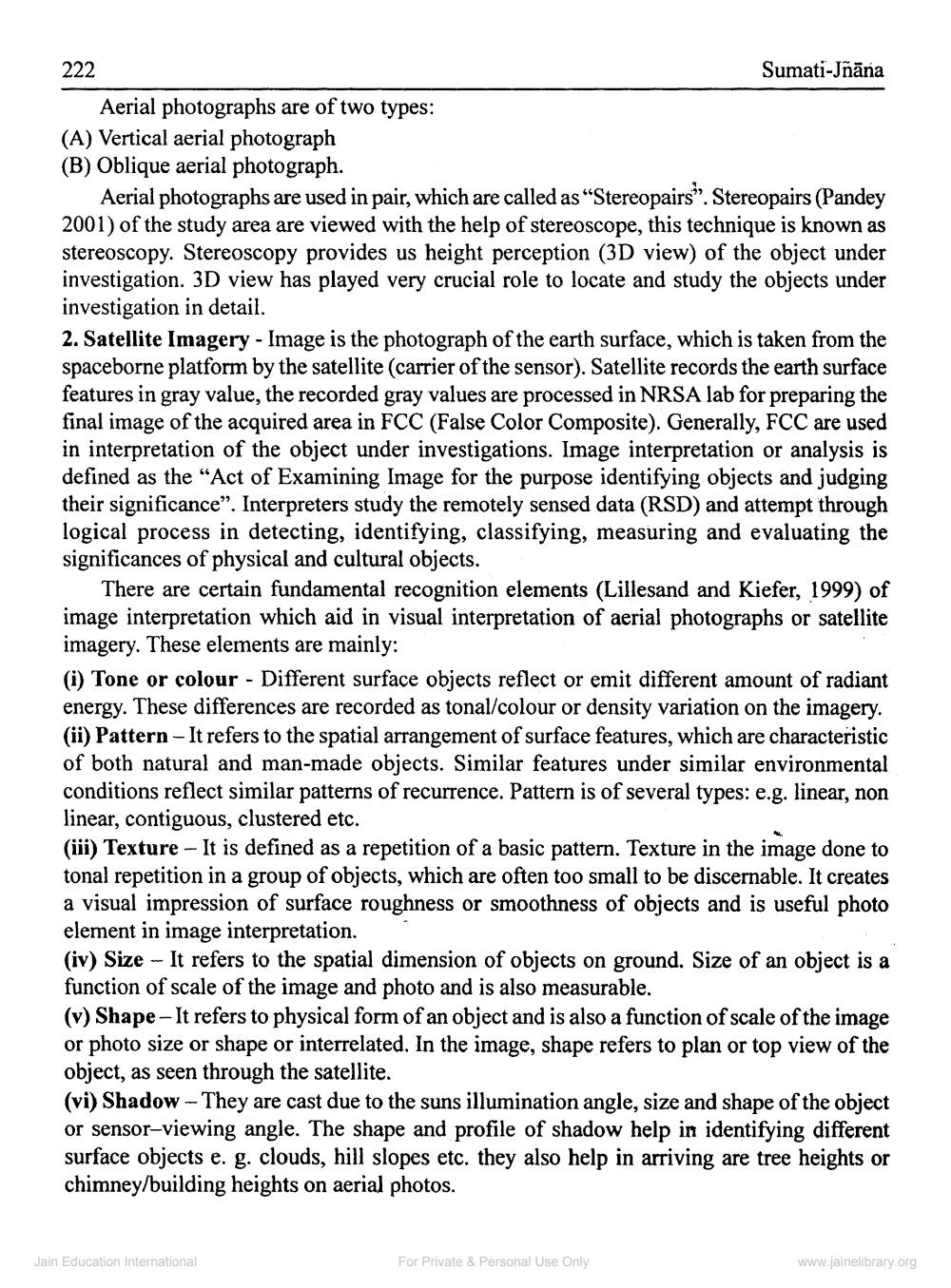________________
222
Sumati-Jñāna Aerial photographs are of two types: (A) Vertical aerial photograph (B) Oblique aerial photograph.
Aerial photographs are used in pair, which are called as “Stereopairs”. Stereopairs (Pandey 2001) of the study area are viewed with the help of stereoscope, this technique is known as stereoscopy. Stereoscopy provides us height perception (3D view) of the object under investigation. 3D view has played very crucial role to locate and study the objects under investigation in detail. 2. Satellite Imagery - Image is the photograph of the earth surface, which is taken from the spaceborne platform by the satellite (carrier of the sensor). Satellite records the earth surface features in gray value, the recorded gray values are processed in NRSA lab for preparing the final image of the acquired area in FCC (False Color Composite). Generally, FCC are used in interpretation of the object under investigations. Image interpretation or analysis is defined as the "Act of Examining Image for the purpose identifying objects and jud their significance”. Interpreters study the remotely sensed data (RSD) and attempt through logical process in detecting, identifying, classifying, measuring and evaluating the significances of physical and cultural objects.
There are certain fundamental recognition elements (Lillesand and Kiefer, 1999) of image interpretation which aid in visual interpretation of aerial photographs or satellite imagery. These elements are mainly: (i) Tone or colour - Different surface objects reflect or emit different amount of radiant
differences are recorded as tonal/colour or density variation on the imagery (ii) Pattern - It refers to the spatial arrangement of surface features, which are characteristic of both natural and man-made objects. Similar features under similar environmental conditions reflect similar patterns of recurrence. Pattern is of several types: e.g. linear, non linear, contiguous, clustered etc. (iii) Texture - It is defined as a repetition of a basic pattern. Texture in the image done to tonal repetition in a group of objects, which are often too small to be discernable. It creates a visual impression of surface roughness or smoothness of objects and is useful photo element in image interpretation. (iv) Size - It refers to the spatial dimension of objects on ground. Size of an object is a function of scale of the image and photo and is also measurable. (v) Shape – It refers to physical form of an object and is also a function of scale of the image or photo size or shape or interrelated. In the image, shape refers to plan or top view of the object, as seen through the satellite. (vi) Shadow - They are cast due to the suns illumination angle, size and shape of the object or sensor-viewing angle. The shape and profile of shadow help in identifying different surface objects e. g. clouds, hill slopes etc. they also help in arriving are tree heights or chimney/building heights on aerial photos.
Jain Education International
For Private & Personal Use Only
www.jainelibrary.org




